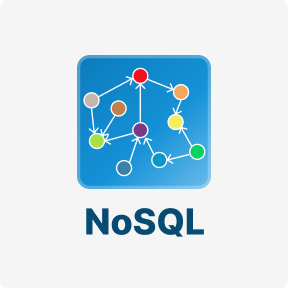She is an active contributor on machine learning to many premier institutes in India. She is recognized as one of “The Phenomenal SHE” by the Indian National Bar Association in 2019. More advanced processing techniques include part-of-speech tagging and named-entity recognition (extracting words and phrases referring to people, organizations, places, and other entities). TextBlob provides a simple API for common NLP tasks such as sentiment analysis, part-of-speech tagging, and noun phrase extraction. It is built on top of NLTK and provides an easy-to-use interface for common NLP tasks. A lot of the data that you could be analyzing is unstructured data and contains human-readable text.
In the sentence above, we can see that there are two “can” words, but both of them have different meanings. The second “can” word at the end of the sentence is used to represent a container that holds food or liquid. Dependency parsing reveals the grammatical structure and relationships between words in a sentence, helping understand the meaning and context of the text. Analytics and data science professionals who want to kick start NLP, and NLP professionals who want to get new ideas to solve the problems at hand. He lives in Bangalore and loves to read, ride, and teach data science.
NLP in Virtual Assistants
Its users include researchers, economists, and social scientists, as statsmodels can be used for more advanced analysis (checking heteroscedasticity, autocorrelation, and multicollinearity). FastAI was created to make state-of-the-art machine learning techniques more accessible to use. Because minimal code is required, advanced techniques are more accessible to Python beginners. Keras is a high-level neural network API that makes it easier for data scientists to build neural network models.
- Its goal is to build systems that can process and understand human language, which is a complex and nuanced form of communication that involves many layers of meaning.
- Chunking literally means a group of words, which breaks simple text into phrases that are more meaningful than individual words.
- Stemming normalizes the word by truncating the word to its stem word.
- This process is known as word sense disambiguation, which ensures that the words are treated as different entities according to their contexts.
- It is built on top of NLTK and provides an easy-to-use interface for common NLP tasks.
- Later in this article, we’ll take a look at an example of sentiment analysis in a Python natural-language processing library called TextBlob.
First, we are going to open and read the file which we want to analyze. This tutorial’s code is available on Github… Read the full blog for free on Medium. I’m assuming you have an understanding of linear algebra, statistics, and linguistics. By the end of the book, you will be able to handle all types of NLP problems independently. You will also be able to think in different ways to solve language problems. And now that we’ve got our text object created, let’s go ahead and see what this looks like.
Bag of Words Method
Among the thousands of libraries out there, I’ll look at 16 favorites according to the most recent Stack OverFlow Survey. These curated libraries each cover what every data professional uses in their day-to-day work. In the preceding output, you can see that a PoS is assigned for each token.

For example, if you were to look up the word “blending” in a dictionary, then you’d need to look at the entry for “blend,” but you would find “blending” listed in that entry.
“Air-Guardian: Elevating Aviation Safety through Human-Machine Partnership”
This essential natural-language processing Python library has the tools to accomplish the majority of NLP tasks. It’s a bit slow, though, so it’s mostly used for teaching purposes. Stop words are the most common words like “the” and “of.” Removing them from the email text allows more relevant words to stand out.

Now, the following code will help you draw your output in the form of a tree. In this chapter, we will learn about language processing using Python. Use the services on the IBM Cloud to translate written text into natural-sounding audio in a variety development of natural language processing of languages and voices within an existing application or within Watson Assistant. Use the services on the IBM Cloud to convert speech into text using AI-powered speech recognition and transcription in multiple languages for a variety of use cases.
TextBlob Sentiment
When we tokenize words, an interpreter considers these input words as different words even though their underlying meaning is the same. Moreover, as we know that NLP is about analyzing the meaning of content, to resolve this problem, we use stemming. POS tagging assigns a part of speech (e.g., noun, verb) to each word in a sentence. It’s fundamental in understanding the grammatical structure of text. He is a visiting faculty for some of the top graduate institutes in India. In his spare time, he enjoys reading, writing, coding, and helping aspiring data scientists.

So, ‘I’ and ‘not’ can be important parts of a sentence, but it depends on what you’re trying to learn from that sentence. You iterated over words_in_quote with a for loop and added all the words that weren’t stop words to filtered_list. You used .casefold() on word so you could ignore whether the letters https://www.globalcloudteam.com/ in word were uppercase or lowercase. This is worth doing because stopwords.words(‘english’) includes only lowercase versions of stop words. As AI Ethicists, Python developers ensure that artificial intelligence is developed & used responsibly, shaping a future where technology serves humanity.
Stemming:
In this course you will learn all about natural language processing and how to apply it to real world problems using the spacey library. TextBlob‘s out-of-the-box sentiment analysis model performs worse than ours on the test set; we might be able to improve its performance with some fine tuning. If you don’t want to build a model from scratch, you can often find a library that does the job.
The traditional method of interaction with a computer by clicking and tapping on options is slowly being phased out by a more seamless approach involving conversations. This modern way of communication includes talking to the computer in a more natural manner, as we tend to talk to other people by using words. Notice that the first description contains 2 out of 3 words from our user query, and the second description contains 1 word from the query.